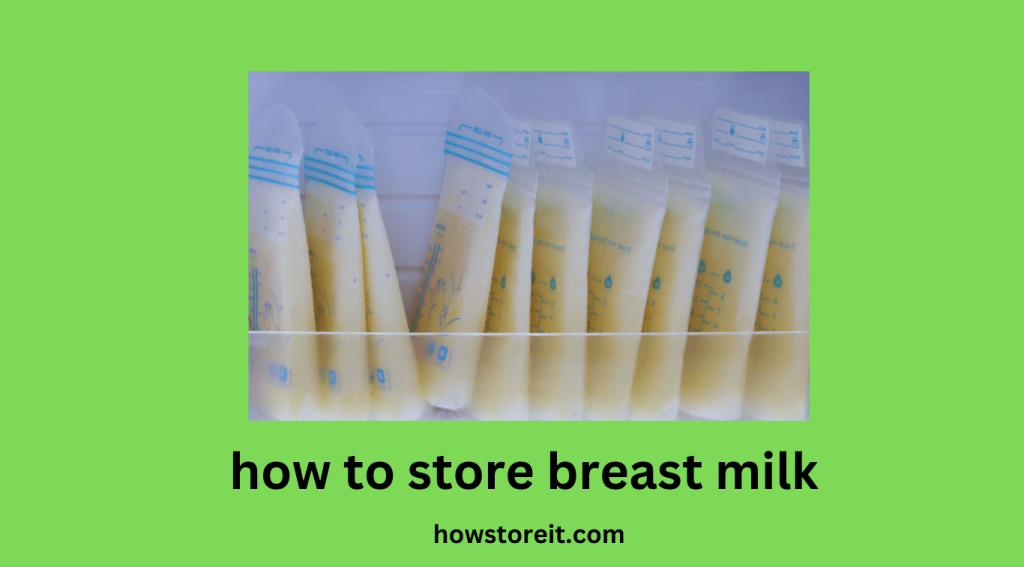
It can be a daunting experience for a new mother to learn how to store breast milk.
From knowing the guidelines for how long breast milk can be stored, to the different methods for storing breast milk safely, there is a lot to be aware of.
With this comprehensive guide, nursing mothers can understand the basics of storing breast milk and make an informed decision on what method works best for them.
- What is Breast Milk and Why is it Important?
- How Long Can Breast Milk be Stored?
- What Are the Different Methods for Storing Breast Milk?
- What Are the Benefits of Storing Breast Milk?
- What Are the Guidelines for Storing Breast Milk?
- What Are the Different Types of Containers for Storing Breast Milk?
- What Are the Best Practices for Storing Breast Milk?
- What Are the Potential Risks of Storing Breast Milk?
- How Should Stored Breast Milk Be Used?
- Conclusion
What is Breast Milk and Why is it Important?
Breast milk is the milk produced by the mammary glands of a lactating mother. It is not only a source of nutrition for the baby, it also contains important hormones, antibodies, and other components that are important for the baby’s growth and development. Breast milk is the best source of nutrition for babies and should be the primary source of nutrition in the first six months of life.
How Long Can Breast Milk be Stored?
The shelf life of breast milk varies depending on the method of storage. Generally, breast milk can be kept at room temperature for up to four hours, in the refrigerator for up to four days, and in the freezer for up to four months. However, it is important to note that the guidelines may differ based on the individual mother.
What Are the Different Methods for Storing Breast Milk?
There are a few different methods that can be used to store breast milk. The first is by freezing, which is the most common method. Breast milk can be frozen in bottles, bags, or ice trays. It is important to note that when freezing breast milk, it should be placed in the back of the freezer, away from the door. The second method is refrigeration, which is ideal for breast milk that will be used within four days. When refrigerating breast milk, it should be stored in the back of the refrigerator, away from the door. The third method is room temperature storage, which is best used for short-term storage, such as when a baby is being fed.
What Are the Benefits of Storing Breast Milk?
Storing breast milk can be beneficial for a number of reasons. One of the main benefits is that it allows the mother to build up a supply of breast milk for her baby. This can be especially beneficial for mothers who are returning to work or school, as it allows them to continue to provide their baby with breast milk even when they’re not physically present. Additionally, storing breast milk can help to preserve its nutritional value, as frozen breast milk is generally more nutritious than freshly expressed breast milk.
What Are the Guidelines for Storing Breast Milk?
When storing breast milk, it is important to follow the guidelines to ensure that the milk is safe for the baby to consume. When freezing breast milk, it should be placed in a clean container and labeled with the date it was expressed. It is also important to ensure that the container is not overfilled, as this can lead to the loss of nutrients. When refrigerating breast milk, it should be placed in a sealed container and used within four days.
What Are the Different Types of Containers for Storing Breast Milk?
There are a variety of containers that can be used for storing breast milk. The most common containers are bottles, bags, and ice trays. When using bottles, it is important to ensure that they are made from BPA-free plastic and are specifically designed for breast milk storage. Bags are also a popular option, as they are disposable and are easy to store in a freezer. Finally, ice trays can be used for freezing breast milk and are generally the most cost-effective option.
What Are the Best Practices for Storing Breast Milk?
In addition to following the guidelines for storing breast milk, it is important to maintain good hygiene practices when expressing and storing the milk. This includes always washing your hands before expressing the milk, making sure the containers are clean, and storing the milk in a clean, dry area. It is also important to ensure that the containers are tightly sealed to avoid any contamination.
What Are the Potential Risks of Storing Breast Milk?
Although there are many benefits to storing breast milk, there are also some potential risks that should be taken into consideration. One of the main risks is that the milk can become contaminated if not stored correctly. This can lead to illnesses such as diarrhea, vomiting, and fever in the baby. Additionally, storing breast milk for too long can lead to the loss of nutrients, so it is important to follow the guidelines for storage times.
How Should Stored Breast Milk Be Used?
Once the breast milk has been stored, it is important to ensure that it is used correctly. Breast milk should be thawed slowly in the refrigerator or at room temperature, and any milk that has been thawed should be used within 24 hours. Additionally, it is important to avoid reheating the milk, as this can destroy the valuable nutrients that it contains.
Conclusion
Storing breast milk can be an important part of providing the best nutrition for a baby. It is important to follow the guidelines for storage times and hygiene practices to ensure that the milk is safe for the baby to consume.
Additionally, it is important to consider the different types of containers and methods for storing breast milk, as this can help to ensure that the milk is properly preserved and that the baby receives the best possible nutrition.
By understanding the basics of how to store breast milk, nursing mothers can make an informed decision on what works best for them and their baby.
